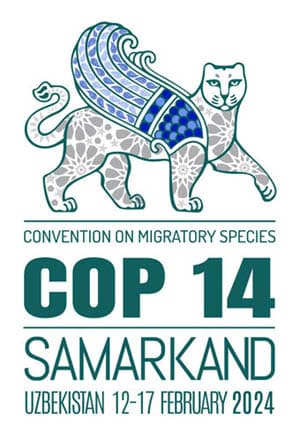Editor’s Note: Since main stream media gives so much attention to COP28 UN Framework Convention on Climate Change (UNFCCC), a lot of people are familiar with it. Climate change is posed as the main environmental issue that we are facing right now. While DGR believes that climate change is a threat, it is by far not the worst. Other pressing issues, like biodiversity loss, are often sidelined by mainstream media. As a result, many people do know what COP14 UN Convention on the Conservation of Migratory Species of Wild Animals (CMS) is. Biodiversity preservation requires habitat restoration, hardly something that anyone could gain profit from. Climate change, on the other hand, has provided many opportunities for corporations, in the name of “green” energy transition. We believe that climate change is a symptom of industrial civilization. Continuation of the process via “renewable” energy will only worsen all the ecological crisis that we are facing now, including climate change. Ending industrial civilization, protecting species and restoring habitats is the only way to actually address these issues.
Nearly Half of Migratory Species Populations Decline
By Climate and Capitalism
Overexploitation and habitat loss pose extinction threats for migratory fish, birds and others, worldwide
The first-ever State of the World’s Migratory Species report, launched at global conference of Parties to the UN Convention on the Conservation of Migratory Species of Wild Animals (CMS), reveals:
- While some migratory species listed under CMS are improving, nearly half (44 per cent) are showing population declines.
- More than one-in-five (22 per cent) of CMS-listed species are threatened with extinction.
- Nearly all (97 per cent) of CMS-listed fish are threatened with extinction.
- The extinction risk is growing for migratory species globally, including those not listed under CMS.
- Half (51 per cent) of Key Biodiversity Areas identified as important for CMS-listed migratory animals do not have protected status, and 58 per cent of the monitored sites recognized as being important for CMS-listed species are experiencing unsustainable levels of human-caused pressure.
- The two greatest threats to both CMS-listed and all migratory species are overexploitation and habitat loss due to human activity. Three out of four CMS-listed species are impacted by habitat loss, degradation and fragmentation, and seven out of 10 CMS-listed species are impacted by overexploitation (including intentional taking as well as incidental capture).
- Climate change, pollution and invasive species are also having profound impacts on migratory species.
- Globally, 399 migratory species that are threatened or near threatened with extinction are not currently listed under CMS.

Click to download full report. (PDF 15.0 MB)
Until now, no such comprehensive assessment on migratory species has been carried out. The report provides a global overview of the conservation status and population trends of migratory animals, combined with the latest information on their main threats and successful actions to save them.
Billions of animals make migratory journeys each year on land, in rivers and oceans and in the skies, crossing national boundaries and continents, with some travelling thousands of miles across the globe to feed and breed. Migratory species play an essential role in maintaining the world’s ecosystems, and provide vital benefits, by pollinating plants, transporting key nutrients, preying on pests, and helping to store carbon.
The main focus of the report is the 1,189 animal species that have been recognized by CMS Parties as needing international protection and are listed under CMS, though it also features analysis linked to over 3,000 additional non-CMS migratory species. Species listed under the Convention are those at risk of extinction across all or much of their range, or in need of coordinated international action to boost their conservation status.
Most worryingly, nearly all CMS-listed species of fish – including migratory sharks, rays and sturgeons – are facing a high risk of extinction, with their populations declining by 90 per cent since the 1970s.

Analyzing the threats to species, the report shows the huge extent to which the decline in migratory species is being caused by human activities.
The two greatest threats to both CMS-listed and all migratory species were confirmed as overexploitation – which includes unsustainable hunting, overfishing and the capture of non-target animals such as in fisheries – and habitat loss, degradation and fragmentation – from activities such as agriculture and the expansion of transport and energy infrastructure.
The State of the World’s Migratory Species report will provide scientific grounding and policy recommendations to set the context and provide valuable information to support the deliberations of the UN wildlife conservation conference (CMS COP14) starting today in Samarkand, Uzbekistan.
The convention also adopted a resolution urging parties not to engage with or support deep-sea mining until more scientific evidence is acquired. This resolution garnered criticism from the secretary-general of the International Seabed Authority (ISA), the U.N.-mandated body that governs deep-sea mining in international waters.
While attendees say COP14 had many successes, some experts say that more action and resources are required to keeping species from sliding toward extinction. – Mongabay
Like this:
Like Loading...
Related



